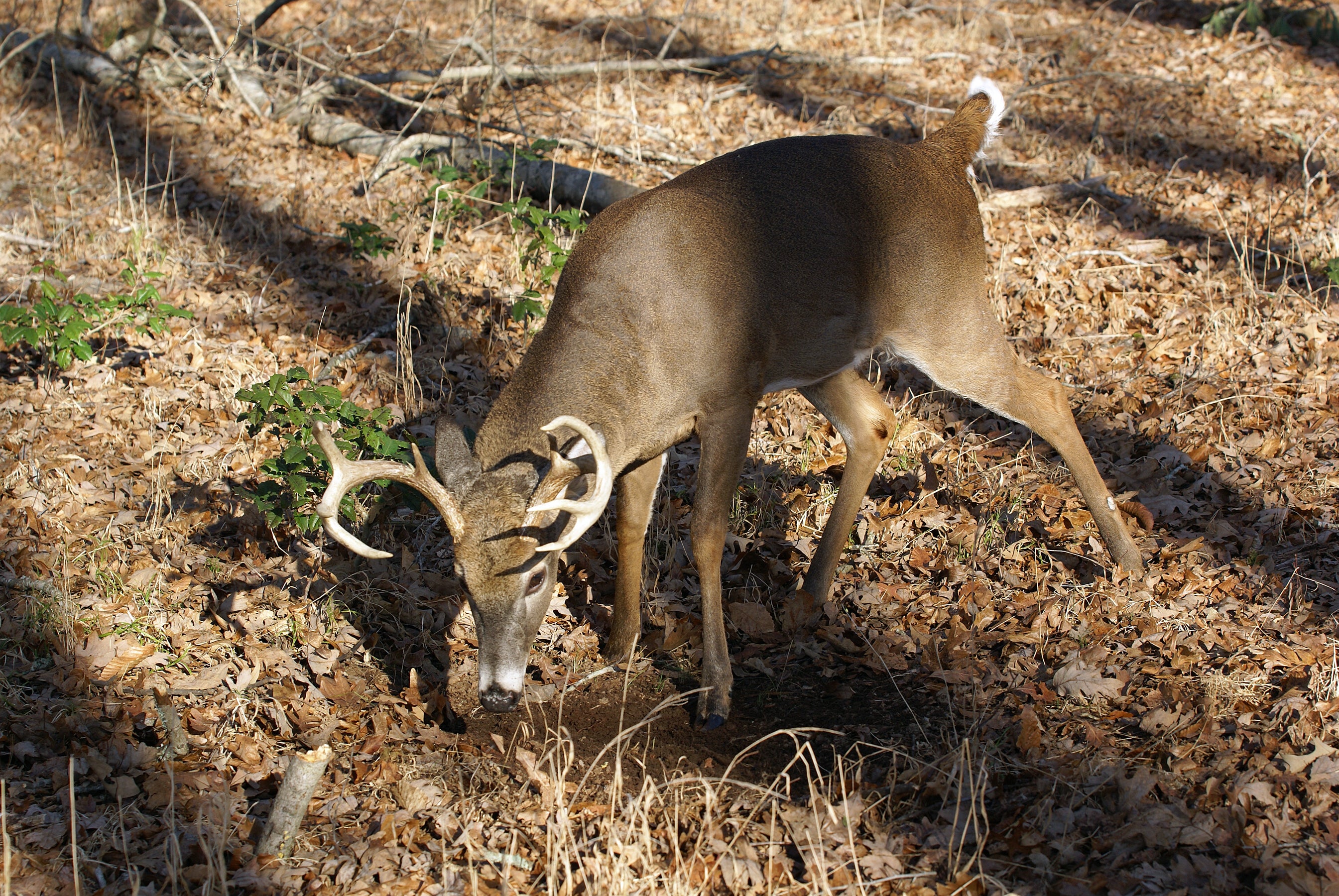By DAVID RAINER, Alabama Department of Conservation and Natural Resources
While the white-tailed deer rut has come and gone in a few areas in Alabama, hunters in the majority of the state are dealing with the December doldrums, waiting for the breeding season to begin in earnest.
Alabama native Chuck Sykes, Director of the Alabama Wildlife and Freshwater Fisheries (WFF) Division, said the whitetails in the bulk of the state adjust to the increased activity in the woods, and hunters are having to deal with a lull in deer movement.
“People kill deer the first couple of weeks of the season, and, in my opinion, those deer get enough pressure that they go underground for a few weeks until the rut brings them back out,” Sykes said.
He said hunters should soon start seeing evidence of early rutting behavior with increased activity by the bucks.
“Typically, you’ll start seeing a few scrapes and rubs, and you’ll start seeing a few does without fawns right up under them,” Sykes said. “The does are starting to wean those fawns, getting ready for the rut. So, you’ll see button bucks walking around aimlessly by themselves.”
Bucks paw the ground to make scrapes where urine is deposited as a scent marker. A licking branch, where the buck can leave additional scent, is usually above a scrape. The rubs are the results of bucks using their antlers to debark trees, often cedars, to mark boundaries and leave more scent.
“Earlier in the season, you’ve got bachelor groups of bucks running together,” Sykes said. “You’ll see a bunch of rubs and scrapes in certain locations where they’re establishing their pecking order.
“This time of year, when you see those scrapes and rubs, it’s deer laying out their territories, getting in areas where they can intercept a bunch of does. That’s a big portion of the mating process. When you start seeing those scrapes being freshened up, those are excellent places to hunt. A scrape is like a deer nightclub. They go to it and lay down some scent. It lets everyone know who’s in the neighborhood.”
In early January, hunters will likely see a few bucks chasing does, but Sykes says that activity is only by the younger bucks.
“Those bucks usually jump the gun by a couple of weeks over your mature deer,” he said. “It’s like people who raise cows. You put a young bull in the pasture, and he’ll follow a cow around three or four days before she’s receptive, a couple of days while she’s receptive and then three or four days after she’s receptive. They waste a lot of energy.
“You put an older bull in the pasture, and he’s going to lay around until the time is right. He conserves energy. Bucks are the same way. Those young bucks are rambunctious and moving around. The mature bucks, you’re not going to see them moving until it’s right.”
As for the timing of the rut, Sykes says peak rutting activity varies very little from year to year.
“You can go back and look at our historical stocking data, and the deer rut takes place within a day or two every year in those certain locations,” he said. “When people say the deer just aren’t rutting because the weather is hot, well, the deer are still rutting. They have the ability to do it at night when the weather cools down. The rut takes place whether you see it or not.
“That’s where the environmental conditions and hunting pressure have effects. If deer are getting pressured a lot, they may not move around during daylight hours. They will wait until after dark.”
Sykes said several misconceptions about the deer rut in Alabama persist, especially with the advent of social media platforms.
“One of the biggest misconceptions is I’ve got this big buck and I’m going to save him because he’s going to breed 15 or 20 does on my property,” he said. “That’s just not the case. Whitetails are not like elk, where a bull elk might have a big harem of 10 or 15 cows. In a good year, a buck may sire four to five fawns.
“Another huge misconception that you see all the time on social media is people talking about taking this buck out of the herd because they didn’t want him breeding and passing along bad genetics. In most cases, that’s just an excuse to pull the trigger. With free-range, wild deer, culling cannot change genetics. There are just too many factors involved. Half of the genetics are coming from the doe.”







